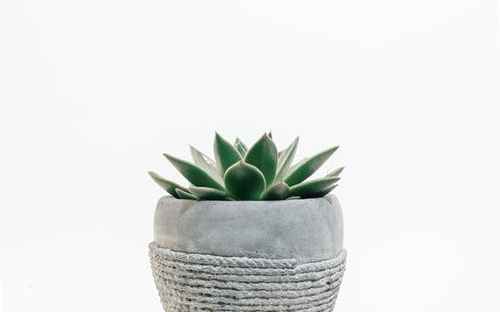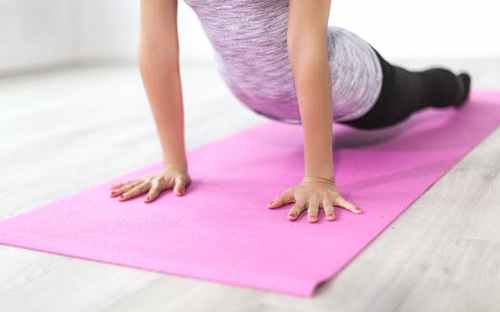I just finished the book “Eat Pray Love” by Elizabeth Gilbert, and whew. This book is easily one of my favorite memoirs to date (and I read a LOT of books, so this is saying a lot).
Just a quick summary, Elizabeth is a modern-American woman, who hit all of the milestones in her 20’s- got married, had a successful career, & had a beautiful home in the country.
After a nasty split with her husband, she decided to ditch her life in America and embark on a self-discovery journey (alone) for a whole year.
She documents her experiences and lessons in 3 different countries– one country for pleasure of the senses (Italy), another for spiritual enlightenment (India), and the third to restore balance in her life (Bali).
PHEWWWW, this book yall.
If you’re reading this and you just recently became single, or have been single for a while, or even if you’re looking for meaning in life- this is the book for you.
So many gems in one book.
The one gem that stuck out to me, I felt the need to share, because it made so much sense to me.
This is an excerpt from the book (the author, Elizabeth, is at an ashram in India where she’s learning to meditate for a few months). She’s having a conversation with someone she met there, Richard. His nickname for her is “Groceries,” just for reference.
“What’s got you all wadded up?” he drawls, toothpick in mouth, as usual.
“Don’t ask” I say, but then I start talking and tell him every bit of it, concluding with, “And worst of all, I can’t stop obsessing over David. I thought I was over him, but it’s all coming up again.”
He says, “Give it another six months, you’ll feel better.”
“I’ve already given it twelve months, Richard.”
“Then give it six more. Just keep throwin’ six months at it till it goes away. Stuff like this takes time.”
I exhale hotly though my nose, bull-like.
“Groceries,” Richard says, “listen to me. Someday you’re gonna look back on this moment of your life as such a sweet time of grieving. You’ll see that you were in mourning and your heart was broken, but your life was changing and you were in the best possible place in the world for it – in a beautiful place of worship, surrounded by grace. Take this time, every minute of it. Let things work themselves out here in India.”
“But I really loved him.”
“Big deal. So you fell in love with someone. Don’t you see what happened? This guy touched a place in your heart deeper than you thought you were capable of reaching. I mean you got zapped, kiddo. But that love you felt, that’s just the beginning. You just got a taste of love. That’s just limited little rinky-dink mortal love. Wait till you see how much more deeply you can love than that. Heck, Groceries – you have the capacity to someday love the whole world. It’s your destiny. Don’t laugh.”
“I’m not laughing.” I was actually crying. “And please don’t laugh at me now, but I think the reason it’s so hard for me to get over this guy is because I seriously believed David was my soul mate.”
“He probably was. Your problem is you don’t understand what that word means. People think a soul mate is your perfect fit, and that’s what everyone wants. But a true soul mate is a mirror, the person who shows you everything that’s holding you back, the person who brings you to your own attention so you can change your life.
A true soul mate is probably the most important person you’ll ever meet, because they tear down your walls and smack you awake. But to live with a soul mate forever? Nah. Too painful. Soul mates, they come into your life just to reveal another layer of yourself to you, and then they leave. And thank God for it. Your problem is, you just can’t let this one go. It’s over, Groceries. David’s purpose was to shake you up, drive you out of your marriage that you needed to leave, tear apart your ego a little bit, show you your obstacles and addictions, break your heart open so new light could get in, make you so desperate and out of control that you had to transform your life, then introduce you to your spiritual master and beat it.
That was his job, and he did great, but now it’s over. Problem is, you can’t accept that his relationship had a real short shelf life. You’re like a dog at the dump, baby – you’re just lickin’ at the empty tin can, trying to get more nutrition out of it. And if you’re not careful, that can’s gonna get stuck on your snout forever and make your life miserable. So drop it.”
“But I love him.”
“So love him.”
“But I miss him.”
“So miss him. Send him some love and light every time you think about him, then drop it. You’re just afraid to let go of the last bits of David because then you’ll be really alone, and Liz Gilbert is scared to death of what will happen if she’s really alone.
But here’s what you gotta understand, Groceries. If you clear out all that space in your mind that you’re using right now to obsess about this guy, you’ll have a vacuum there, an open spot – a doorway. And guess what the universe will do with the doorway? It will rush in – God will rush in – and fill you with more love than you ever dreamed. So stop using David to block that door. Let it go.”
Wow… right?
This excerpt reminded me of the saying, “We Only Fall in Love with 3 Different People in Our Lifetime“– I heard this a long time ago (like, years ago), but it didn’t really resonate with me until now.
If you’re not familiar with this saying, I’ve copied & pasted the exact words of it:
(We’ll skip the “first time you fall in love”, because it’s not relevant to soulmate vs life partner)
Falling In Love the 2nd Time: The Hard Love
“The second is supposed to be our hard love—the one that teaches us lessons about who we are and how we often want or need to be loved. This is the kind of love that hurts, whether through lies, pain or manipulation.
We think we are making different choices than our first, but in reality we are still making choices out of the need to learn lessons—but we hang on.
Our second love can become a cycle, often times one we keep repeating because we think that somehow the ending will be different than before. Yet, each time we try, it somehow ends worse than before.
Sometimes it’s unhealthy, unbalanced or narcissistic even. There may be emotional, mental or even physical abuse or manipulation—most likely there will be high levels of drama.
This is exactly what keeps us addicted to this storyline, because it’s the emotional roller coaster of extreme highs and lows and like a junkie trying to get a fix, we stick through the lows with the expectation of the high.
With this kind of love, trying to make it work becomes more important than whether it actually should.
It’s the love that we wished was right.”
Falling In Love the 3rd Time: The Love that Lasts
“And the third is the love we never see coming. The one that usually looks all wrong for us and that destroys any lingering ideals we clung to about what love is supposed to be. This is the love that comes so easy it doesn’t seem possible. It’s the kind where the connection can’t be explained and knocks us off our feet because we never planned for it.
This is the love where we come together with someone and it just fits—there aren’t any ideal expectations about how each person should be acting, nor is there pressure to become someone other than we are.
We are just simply accepted for who we are already—and it shakes to our core.
It isn’t what we envisioned our love would look like, nor does it abide by the rules that we had hoped to play it safe by. But still it shatters our preconceived notions and shows us that love doesn’t have to be how we thought in order to be true.
This is the love that keeps knocking on our door regardless of how long it takes us to answer.”
So when I read that excerpt from Eat Pray Love, it automatically reminded me of this description of your “2nd love”.
And then the “3rd love” is supposed to be your life partner.
It’s crazy because I wrote the caption to my breakup post (you can read it [HERE]), before even reading the book or remembering that famous quote.
After re-reading my caption, it fit Richard’s description of “soulmate” to a T.
But after the 2nd & 3rd love descriptions, I found myself scratching my head because some of the 3rd love’s description seemed to have fit the 2nd love as well… my last relationship was a mixture of both.
I then realized I cannot waste my time sitting in the confusion and trying to piece things together so that it made sense to me.
I stopped focusing on the past, and started living more in the present.
I started focusing more on being brave and digging deeper, in order to find more parts of myself I don’t like- acknowledge them, and then send them on their way. Because I read an important quote the other day, that said “In all things, there is a law of cycle. Until you heal and change your thinking patterns, you will always recycle your relationships.”
What’s for me is already making it’s way to me, I just have to keep up the work.
I have gained inner peace in firmly believing everything will make sense one day.
After all, some of my darkest moments in the past didn’t make sense at the time, but have played out to be bigger and better than anything I’d ever imagined.
And when what’s for me finally arrives? I’ll smile & know that the Universe believed I was ready to receive it.
To purchase the book, which I highly, highly recommend (I finished it in a week!)- you can buy it [HERE].
If you loved this post, you’d love my [How Knowing the Love Languages Changed My Relationship] post!
[mc4wp_form id=”1779″]







































